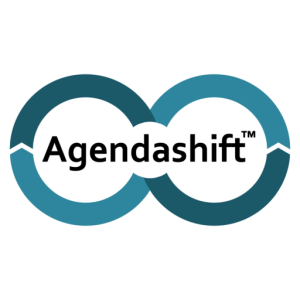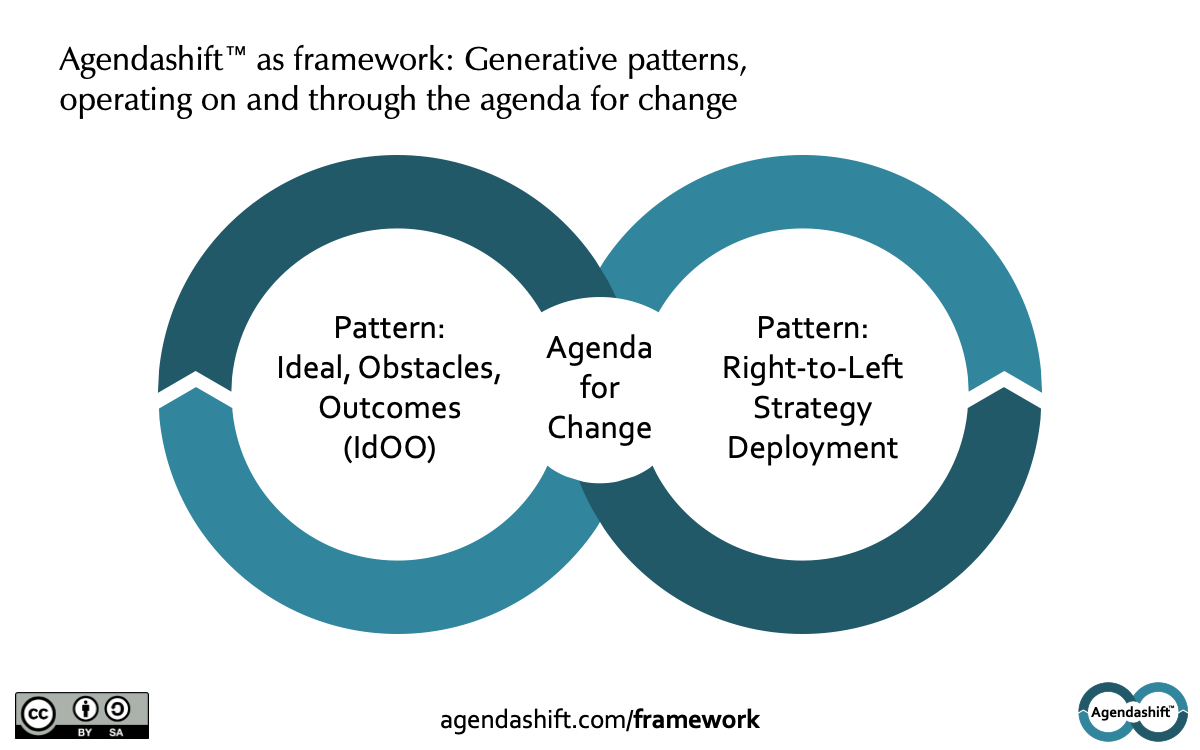[Updated March 10th: tweaked the headings, replaced the image]
Or if you prefer:
- After Rumelt, three guiding policies – thank you Oren Golan for the reminder
- Less grandly, three things to keep working at if you’re doing anything strategy-related (which, if you think about it, should be a lot of the time)
For now at least (this is a work in progress) I’ll go with meta strategies. They’re strategies for getting better at strategy, in particular the kinds of strategy that tends to motivate transformation. And forgive me if I drop the meta once in a while.
Meta strategy 1. Keep asking the “agreement on outcomes” question
Which is to say, keep asking this question and learn to really mean it:
What if we put agreement on outcomes ahead of solutions?
Authentic agreement on meaningful outcomes. “Authentic agreement” meaning the right people in the room, agreeing on things that matter, expressed in their own words. “Meaningful outcomes” meaning not just numbers, not just targets, but needs met, happy endings to stories, the world changed for people in meaningful ways.
Solutions second, outcomes leading the way – literally “leading with outcomes” [1] – solutions emerging from the people closest to the problem [2], people already motivated to find them.
All of that is a 180 degree turnaround from those 1990’s models of managed change, a different paradigm entirely. Instead of using outcomes to sell solutions (and very often solutions of the wrong kid of scale), we use outcomes to find solutions. Not just game-changing for engagement, a completely different game.
Meta strategy 2. Change the game’s objectives to keep outcomes in the foreground
The trick here is to change the meaning of ‘done’:
- You’re ‘done’ only when needs have been met
- You’re ‘really done’ only when you have fully accounted for all the learning
Outcomes don’t go away once we start thinking about solutions – quite the opposite. Outcomes change what ‘done’ and ‘really done’ mean. When we account properly for learning, it creates certain expections, helping to keep ‘done’, ‘really done’, and all the outcomes they represent in the foreground. Solutions are kept in their proper place, just a means to an end, held much more lightly.
We’re done when “someone’s need was met” [3], the outcome demonstrably achieved. This implies that we know whose need we’re trying to meet, what need, and how we’d know that we have indeed met it.
We’re really done when we’ve fully accounted for all the learning that goes with achieving the outcome. To be sure of not missing any, work is framed in the right way (as hypotheses and experiments, whenever that’s appropriate), the right things are monitored, and regular reviews are in place. The regular rhythm of review and the shared understanding of what each review entails creates containers for learning. If you know that the learning will need to be accounted for, it really changes how you work.
Meta strategy 3. Keep developing your understanding of where all this happens
Where rather than how, because the third meta strategy of the three is not about practice or process, but organisation [4]. It’s about working to eliminate a common organisational dysfunction, also working to develop a kind of organsational agility that’s about so much more than mere speed.
If instead of keeping outcomes in the foreground you allow yourself to be distracted by solutions and how you’re rolling them out, you are managing for progress (or worse, activity), not impact. Compounding the error, one group manages things that people closer to the work could easily be managing for themselves. And it works in the opposite direction too: one group second-guessing the needs, priorities, and strategies of another. In short: the wrong people managing for the wrong things. Totally dysfunctional, so common, and don’t be so sure that your branded process framework or your PMO will fix it for you either!
Often this dysfunction happens between levels of organisation (up and/or down), but the trick is to think less in terms of hierarchy or process and more in terms of identity and purpose. For an outcome, what’s the group of people most closely identified with it or that you would want to see organising around it? Conversely, for any group of people with an identity of its own and the apparent will to develop itself – team, team of teams, something bigger, something cross-cutting, whatever – what are the outcomes that it is pursuing? What, in other words, is its strategy, and has it been afforded the opportunity to develop it for itself and in its own words?
That way of looking at organisation has a dynamism that’s simply not there in the org chart or the process diagram. People participating in multiple circles, circles that overlap and rapidly share learning, insights, and intelligence because they also share people. For as long as they’re needed, circles that have lives of their own. Structures that by themselves and in their relationships support both the development of people and the development of the organisation. Structures rich and dynamic enough to meet the ever-changing complexities of the business environment.
With this third meta strategy, the preceding two don’t just have a home, they have many homes. Strategy becomes something fractal and emergent, living in the conversations not just within circles, but between them.

[1] This section drawn from the first video in Leading with Outcomes: Foundation (academy.agendashift.com)
[2] Thank you Karl Scotland for that wording
[3] See Done (agendashift.com/done)
[4] See the Deliberately Adaptive Organisation (deliberately-adaptive.org)
For further reading, my two most recent books:
- Agendashift: Outcome-oriented change and continuous transformation (2nd ed 2021)
- Right to Left: The digital leader’s guide to Lean and Agile (2019, audiobook 2020)
What if we put agreement on outcomes ahead of solutions?
Agendashift™: Serving the transforming organisation
Agendashift Academy: Leading with Outcomes | Home | Store
Links: Home | Subscribe | Become an Agendashift partner | Events | Contact | Mike
Resources: Tools & Materials | Media | Books | Assessments
Blog: Monthly roundups | Classic posts
Community: Slack | LinkedIn group | Twitter








